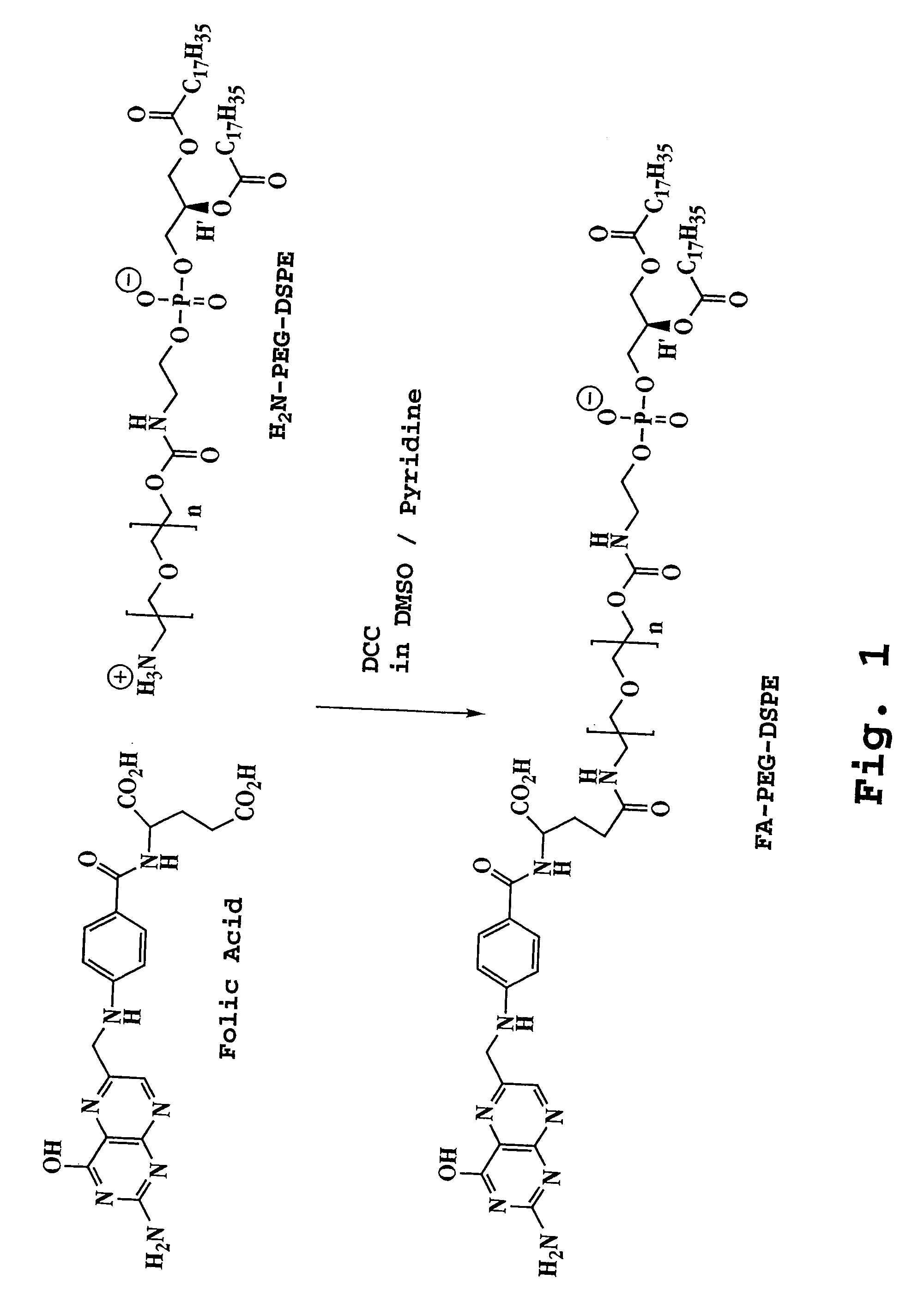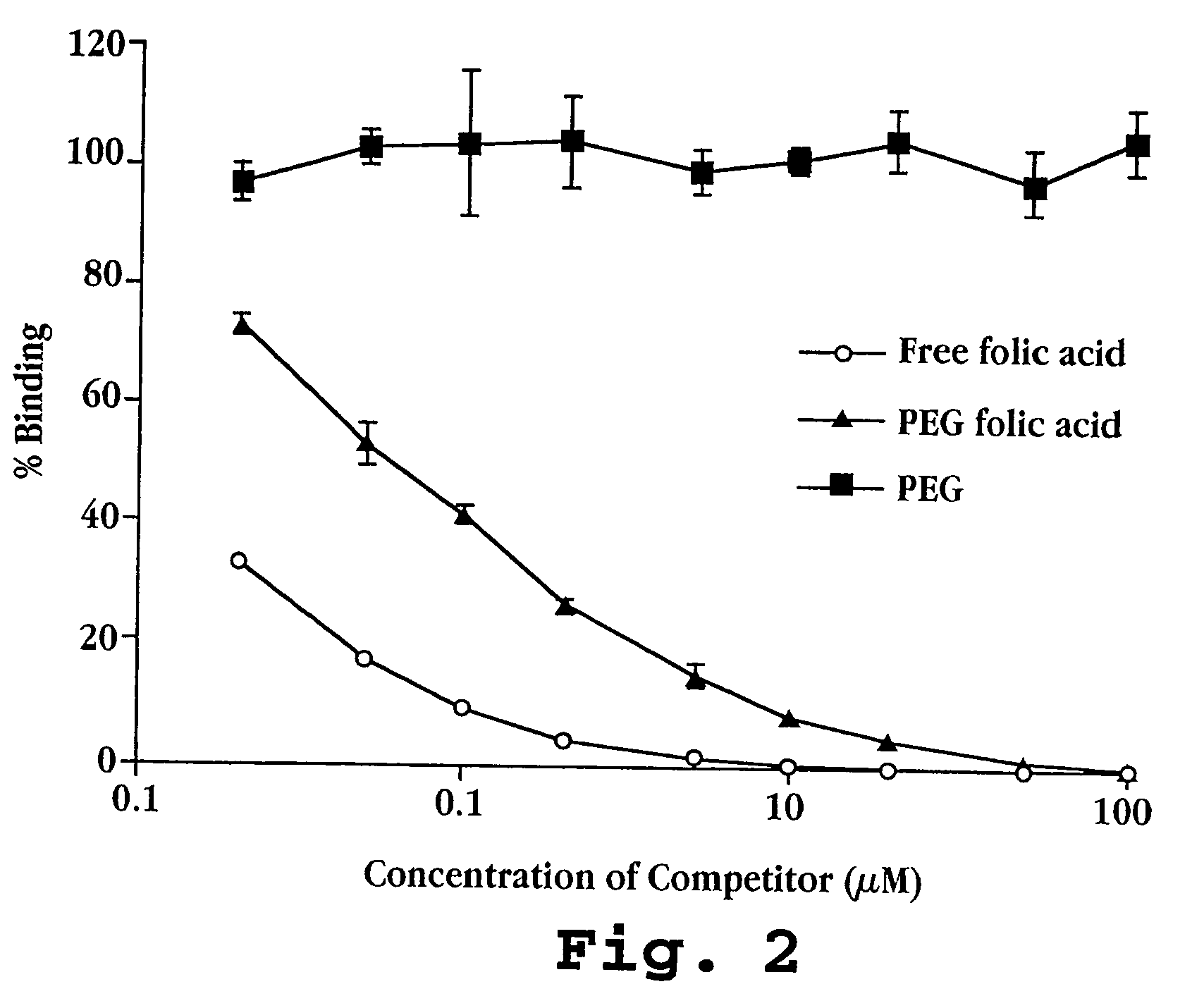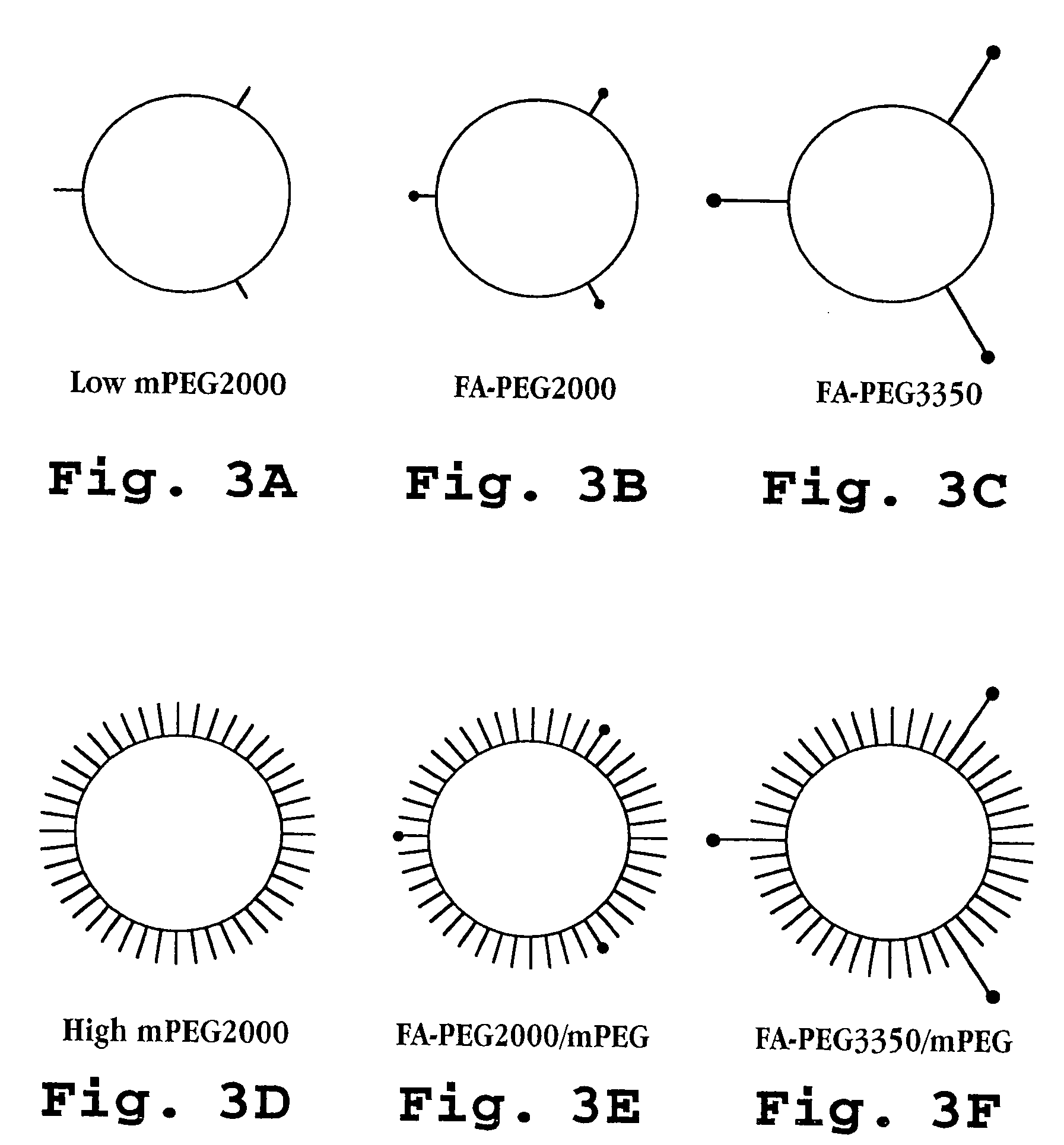Method of administering a compound to multi-drug resistant cells
a multi-drug resistant, therapeutic compound technology, applied in the direction of antibacterial agents, drug compositions, peptide/protein ingredients, etc., can solve the problems of drug resistance, cancer cell limitation of successful chemotherapy for cancer cells, poor patient prognosis,
- Summary
- Abstract
- Description
- Claims
- Application Information
AI Technical Summary
Benefits of technology
Problems solved by technology
Method used
Image
Examples
example 1
Preparation and Characterization of Folic Acid-PEG-DSPE Conjugates
[0099] A. Synthesis of Conjugate
[0100] Folic acid (Fluka, 100 mg, 0.244 mmol) was dissolved in DMSO (4 mL). Amino-PEG2000-DSPE (prepared as set forth in Zalipsky, S. et al., FEBS Lett. 353:71-74 (1994)) (400 mg, 0.14 mmol) and pyridine (2 mL) were added to the folic acid-DMSO solution followed by dicyclohexylcarbodiimide (130 mg, 0.63 mmol). The reaction was continued at room temperature for 4 hours. TLC on silica gel GF (chloroform / methanol / water 75:36:6) showed a new spot (R1=0.57) due to the formation of the product. Disappearance of amino-PEG-DSPE (R1=0.76) from the reaction mixture was confirmed by ninhydrin spray. Pyridine was removed by rotary evaporation. Water (50 mL) was added to the reaction mixture. The solution was centrifuged to remove trace insolubles. The supernatant was dialyzed in Spectra / Por CE (Spectrum, Houston, Tex.) tubing (MWCO 300,000) against saline (50 mM, 2×2000 mL and water (3×2000 mL). ...
example 2
Cell Culture and Binding Studies
[0110] A. Cell Culture
[0111] Cells were cultured in normal or folic acid-free RPMI medium, with 10% fetal bovine serum, glutamine 2 mM, penicillin 50 u / mL, and streptomycin 50 μg / mL. The concentration of folic acid in the serum-containing folic acid-free medium is only 3 nM, as opposed to 2.26 μM (1 mg / L) under normal culture conditions. Cells were routinely passed by treatment with trypsin (0.05%)—EDTA (0.02%) solution in Industries (Beyt Haernek, Israel), and fetal bovine serum was from GIBCO (Grand Island, N.Y.).
[0112] (i) Cell lines: M109, a murine lung carcinoma line of BALB / c mice (Marks, T. A. et al., Cancer Treat. Rep., 61:1459-1470 (1997)), and a subline of these cells, M109R displaying multidrug-resistance, (approximately 100 fold increased resistance to doxorubicin) were used in most of the studies. Both cell lines express in vitro low amounts of folic acid receptors and are therefore referred to as M109-LoFR and M109R-LoFR. By culturing...
example 3
Liposome Preparation
[0119] Liposomes composed of hydrogenated soybean phosphatidylcholine (HSPC) (Avanti Polar Lipids, Birmingham, Ala.), cholesterol (Chol) (Sigma, St. Louis, Mo.) and methoxyPEG2000-DSPE (mPEG-DSPE) were prepared as described previously (Zalipsky, S., et al, Bioconjugate Chem., 4:296-299 (1993)). The liposome compositions are set forth in Table 2, above and, as discussed, because all of the formulations contained HSPC, Chol, and DSPE, thus, they are referred to herein according to folic acid-PEG / mPEG content. FIG. 3 schematically illustrates the formulations.
[0120] All liposome preparations were spiked with a trace amount of 3H-Cholhexadecyl ether (NEN, Boston, Mass.). Liposomes were made by hydration at 55-60° C. of either a thin dry lipid film obtained by rotary evaporation of a chloroform:methanol (1:1) lipid solution or a freeze-dried lipid “cake” obtained by lyophilization of tert-butanol lipid solution. The buffer used was 5% dextrose / 15 mM Hepes, pH 7.4 at...
PUM
| Property | Measurement | Unit |
|---|---|---|
| molecular weight | aaaaa | aaaaa |
| molecular weight | aaaaa | aaaaa |
| molecular weights | aaaaa | aaaaa |
Abstract
Description
Claims
Application Information
 Login to View More
Login to View More - R&D
- Intellectual Property
- Life Sciences
- Materials
- Tech Scout
- Unparalleled Data Quality
- Higher Quality Content
- 60% Fewer Hallucinations
Browse by: Latest US Patents, China's latest patents, Technical Efficacy Thesaurus, Application Domain, Technology Topic, Popular Technical Reports.
© 2025 PatSnap. All rights reserved.Legal|Privacy policy|Modern Slavery Act Transparency Statement|Sitemap|About US| Contact US: help@patsnap.com



